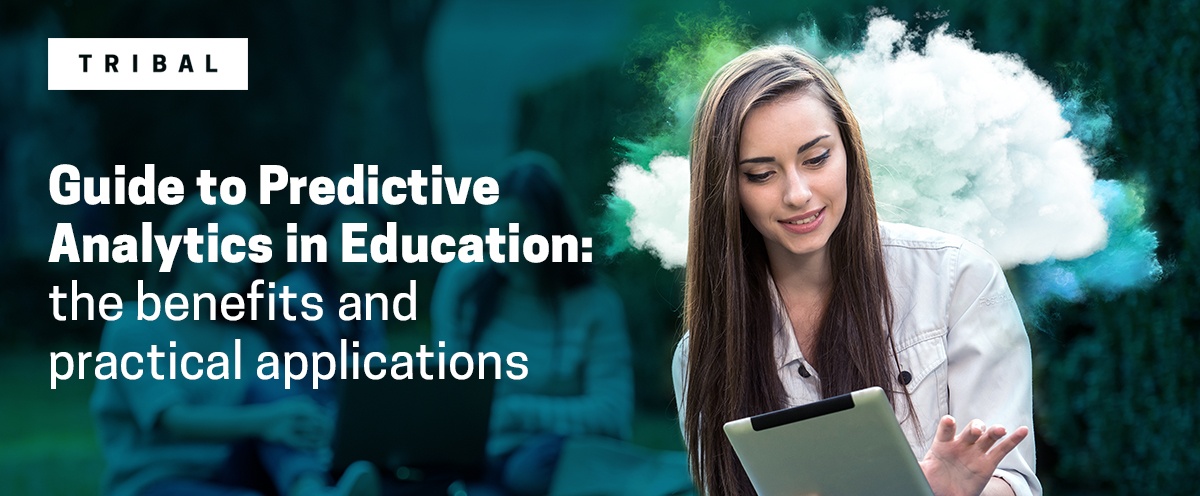Common misconceptions about predictive analytics in the education sector
Examples of predictive analytics are everywhere, and the education sector is no exception. The approach uses historical student data to create models that help forecast future problems or opportunities. Educational institutions are using existing student data to gain insights on current or future student performance.
There are, however, fears and misunderstanding surrounding the concept of predictive analytics. This blog examines and exposes three common myths about predictive analytics and big data within the education sector:
Myth #1: An analytics model will solve ALL your problems
No, it won’t.
A data analytics model still needs you to advise on the data that you are already collecting. However, a model will provide a pathway to open up your data and identify opportunities so you can foresee what’s likely to happen.
It’s vital to do the intervention quickly and know the difference between causation (the human element) and correlation (the machine’s input). Ultimately, one doesn’t cause the other because there is no mathematical way of defining the former, only the latter.
For example, think about students who regularly go to their school, college or university library. Does that indicate that they’re likely to stay in college? Perhaps. But what that doesn’t mean is you should make a rule that demands every single student has to go to the library – because you won’t get the same outcome.
Machine learning is a helper to you, not the other way around. With any automation, it should allow you to make clear choices quickly but still enable you – the decision-maker – to focus on the trickier, more humanistic elements.
Myth #2: AI can instantly automate your lives – and replace you!
We have all heard this one before. But don’t worry, you are safe!
Machines will not take your jobs. If anything, they should enhance your roles. That is because savvy tools are there to provide insights that are not emotionally driven. They are using mathematics to drill down the data and are in fact taking away the more laborious, mundane tasks so you can prioritise on what matters that automation cannot naturally solve. You should trust the machines and work collaboratively. Machine learning must engage operators so that they understand the decisions it is making, and therefore act swiftly.
Think of ‘Hawk-Eye’ technology in tennis. It’s used to limit emotive moments, shutting down any questionable decisions with critical evidence to back up the umpire’s call. Every single person watching can see exactly how the decision has been made by the machine too, which introduces a greater level of fairness and trust that wasn’t there before. Line judges provide the human element, but it’s the machine that augments their decisions.
Ultimately, you are a vital element for the success of your analytics model because you’re the observer who knows when you need to intervene – and when not to
Myth #3: Your data needs to be perfect.
No, it does not.
Data will never be perfect. Instead, adjust your thinking by taking what you have at the moment, looking at it and deciding where to apply your focus so that you can gather more quality detail in future. Your analytics model should be able to extract information very quickly. Yes, it might tell you that your insight isn’t good enough, but equally, it could provide you with intelligence that you didn’t previously know.
Data is critical across all industries. For example, if you work in a college, it can help you analyse student retention and welfare to predict which individuals will most likely drop out. If you’re part of local government, it can reduce public sector housing costs via predictive maintenance regimes. Perhaps it can be plugged in to assist in how a marketing department projects customers at risk of leaving – and therefore drives the organisation to automate incentive schemes which encourage them to stay? Alternatively, healthcare specialists can forecast patients most likely to miss their appointment – and intervene while time is on their side.
Starting your analytics and AI journey sooner rather than later can help you understand what data you need and how to evolve it to make these all-important business decisions swifter and smarter.
How to prepare for the future of predictive analytics in education
To help you think more about predictive analytics, we have put together a comprehensive guide outlining the benefits and practical applications in education.
TOPICS:
SHARE THIS ARTICLE:




